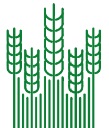Simulated impacts of weather variability on seasonally moving pastoral livestock in northern Senegal
Households in the arid or semi-arid regions often practice transhumance, which means that the household or part of it moves seasonally with animals from a common pasture to another. Semi-arid regions in the Sahel have faced increasing environmental pressure due to population growth and decreasing rainfall. In northern Senegal this has changed the pattern of movement and stocking densities in the area.
Pastoral livestock which utilizes common rangeland is heavily exposed to weather variability. The goal of this paper is to examine how potential changes in weather variability and rainfall could affect the decisions to move animals in an extensive pastoral livestock system across two regions.
Building on earlier research we develop a stochastic dynamic programming model that describes extensive, common-pasture-based livestock under stochastic and spatially varying weather. We extend previous research by allowing animal’s movements between two regions and take into account that decisions can be adjusted when new information about the weather arrives. Decision rules to sell and move animals under exogenous price, market and climate scenarios are investigated.
The results show that in the absence of efficient feed markets and under unpredictable weather, transhumance can be a rational livestock management strategy. Weather has an important role in the herder’s decision-making especially in years when the rainfall turns out to be below that of an average year. By contrast, economic variables play an important role when rainfall is not limiting herd sales decisions. Increased frequency of extreme weather conditions, such as heavy drought or rainfall, may have more severe impacts on livestock husbandry than gradual changes in the mean annual rainfall or temperature suggest. Hence, policies should aim at mitigating the negative consequences of extreme weather.
- Log in to post comments


